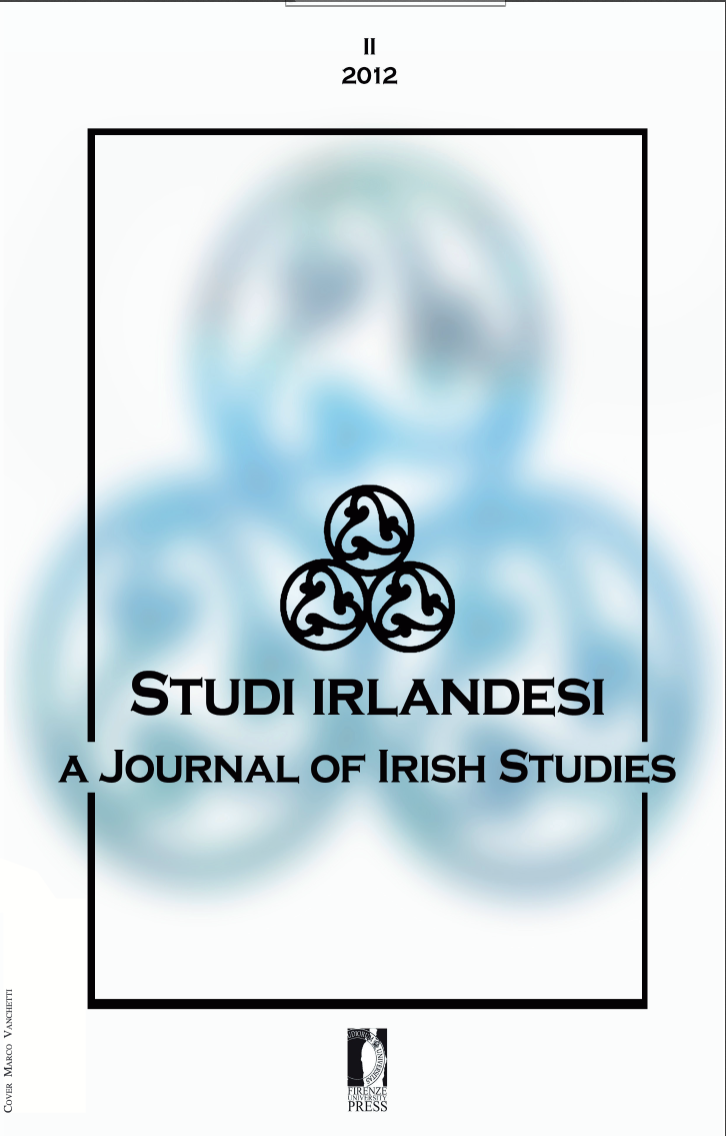Pubblicato 2013-03-07
Come citare
Abstract
This essay deals with the tradition of the revelation of Purgatory to St. Patrick on Station Island in Lough Derg, whose popularity is testified not only in literary texts in the various languages of Medieval Europe but also in a unique work of art in the convent of the Sisters of Saint Clair at Todi, Umbria, a town along the Via Francigena, the road of medieval pilgrimages from Canterbury to Rome. It is a fresco which represents St. Patrick’s Purgatory, attributed to Jacopo di Mino del Pellicciaio, dated 1346. In 1974, following restoration carried out by Marcello Castrichini and Leonilde Dominici, the splendid fresco came to light again. The work was completed in 1985, but is not open to the public without special permit because it is located in the old refectory of the closed area of the convent. The fresco is discussed in some detail, comparing the forms and rituals of the Irish pilgrimage, the medieval legend of Owen to the life of Filippo Benizi, the Saint portrayed among the protagonists of the painting. In order to prove the ever-lasting popularity of the legend related to the Irish Saint in the same area another monument, the so-called ‘St. Patrick’s Well’ in Orvieto, designed by Antonio da Sangallo the Younger in 1527, is briefly referred to.


